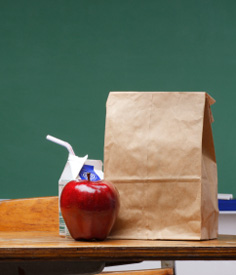 One of Michelle Obama’s greatest passions is helping our children grow up healthy and reversing the alarming childhood obesity trend. Seeing President Obama sign the the Healthy, Hunger-Free Kids Act last week was particularly meaningful for her.
One of Michelle Obama’s greatest passions is helping our children grow up healthy and reversing the alarming childhood obesity trend. Seeing President Obama sign the the Healthy, Hunger-Free Kids Act last week was particularly meaningful for her.
“We can all agree that in the wealthiest nation on Earth, all children should have the basic nutrition they need to learn and grow and to pursue their dreams, because in the end, nothing is more important than the health and well-being of our children. Nothing. And our hopes for their future should drive every single decision that we make,” said Mrs. Obama.
This new bill, backed with bipartisan support, was further explained by President Obama. “We need to make sure our kids have the energy and the capacity to go toe to toe with any of their peers, anywhere in the world. And we need to make sure that they’re all reaching their potential.”
Some Key points include:
- Gives USDA the authority to set nutritional standards for all foods regularly sold in schools during the school day, including vending machines, the “a la carte” lunch lines, and school stores.
- Provides additional funding to schools that meet updated nutritional standards for federally-subsidized lunches. This is the first real reimbursement rate increase in over 30 years.
- Helps communities establish local farm to school networks, create school gardens, and ensures that more local foods are used in the school setting.
- Builds on USDA work to improve nutritional quality of commodity foods that schools receive from USDA and use in their breakfast and lunch programs.
- Expands access to drinking water in schools, particularly during meal times.
- Sets basic standards for school wellness policies including goals for nutrition promotion and education and physical activity, while still permitting local flexibility to tailor the policies to their particular needs.
- Promotes nutrition and wellness in child care settings through the federally-subsidized Child and Adult Care Food Program.
- Expands support for breastfeeding through the WIC program.
In addition, the bill will increase the number of children who qualify for free or reduced lunches, require schools to be audited every three years to be certain of compliance and provide additional training for lunch room employees. Schools will also have to provide nutrition information to parents upon request.
Sample menus were released to show before and after choices. An original menu lists a hot dog on white bun, canned pears, raw celery, carrots and chocolate milk. The revamped menu includes whole wheat spaghetti with meat sauce, whole wheat roll, broccoli, cauliflower, kiwi halves and low fat white milk.
via letsmove.gov
Also Read:
School Lunches Don’t Have to be Junk
The Great American Salad Bar Project to Improve School Lunches
